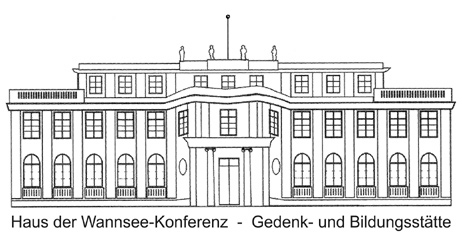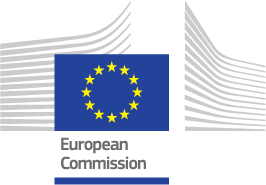This E-learning module has been designed to reflect on the Holocaust and Human rights today. Its aim is to make users familiar with important aspects of Holocaust history and encourage them to explore whether this history provides insights that are relevant for them as citizens and professionals. For this purpose the module starts with three introductory chapters:
- An exercise with photos, statements, an interview on aspects of the Holocaust as an administrated genocide and the role of the Wannsee Conference, and a timeline for "reflections on human dignity in past and presence"
- A history lesson on the "role of fundamental rights violations in the process of the establishment of Nazi dictatorship in Germany"
- A "discussion of photos of the persecution of Jews in Germany" (1933–1940)".
- to 10. Seven case studies presenting a broad as possible range of places, of stories and fates of perpetrators and victims are the core of the module. Whereas the first three case studies (Reich Ministry of Justice, Policing Persecution in Germany and Dutch Registration Office) deal with the scope of action of officials, case three is an example of transitional justice (Crimes against Humanity - the Doctors' Trial in Nuremberg). Cases four and five (Picturing Roma and Holocaust in Hungary) deal with the difficulties in remembering the crimes of the Nazis and their collaborators and in commemorating the victims. (See also the reference map for easy access at the end of this introduction.)
Each case study offers:
- A short information section ("about")
- A gallery of "images" as a visual, associative approach
- A list of references ("sources")
- A "download" section with a chronology related to the case study, PDF files with the sources in extenso, transcripts, etc.
- "Additional links" related to the case study and nowadays fundamental rights issues
- An introductory text to enable an overview
- (Vocational) "assignments", followed by
- Six to eight "documents"
They all provide materials, links or hints to today’s issues – without offering easy answers as to what to learn from the past. Users are invited to hear or read the interview and the lectures and to explore which historical cases are most relevant for them by studying the materials. The assignments can facilitate this exploration.

The online module was commissioned by the European Union Agency for Fundamental Rights (FRA)
 and produced by the House of the Wannsee Conference, Berlin, in cooperation with the Agency for Historical, Civic and Media Education – Dr. Constanze Jaiser (project coordination) and Dr. Christoph Kreutzmüller, Nadja Grintzewitsch, Dr. Hans-Christian Jasch, Dr. Wolf Kaiser, Birgit Marzinka. Energy Translations provided translation of materials; Volker Moritz programmed the module.
and produced by the House of the Wannsee Conference, Berlin, in cooperation with the Agency for Historical, Civic and Media Education – Dr. Constanze Jaiser (project coordination) and Dr. Christoph Kreutzmüller, Nadja Grintzewitsch, Dr. Hans-Christian Jasch, Dr. Wolf Kaiser, Birgit Marzinka. Energy Translations provided translation of materials; Volker Moritz programmed the module.
 The material was tested and evaluated during pilot training for EU officials which was organized by the European Commission in Brussels. Helpful feedback from the participants was taken into account in the further development of this E-learning tool.
The material was tested and evaluated during pilot training for EU officials which was organized by the European Commission in Brussels. Helpful feedback from the participants was taken into account in the further development of this E-learning tool.
Reference Map for Individual Case Studies
Two locations are shown for each case study:
- Red pin: a place that is central to the analysis of the historical material
- Blue pin: a place in modern Europe related to the overarching themes of "Scope of Action and Responsibilities of Officials", "Measures of Transitional Justice" and "Challenges of Memory in Europe".
Note: To expand the legend "Menu List", click on the top left; to collapse it, click on the arrow at the bottom edge of the legend.

